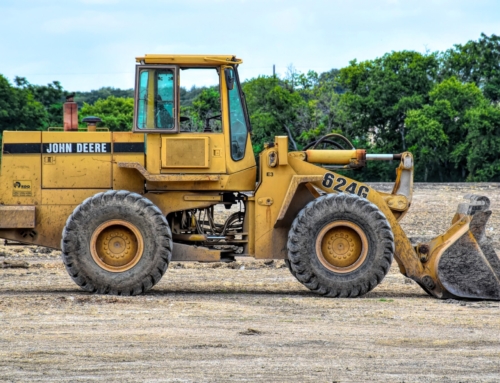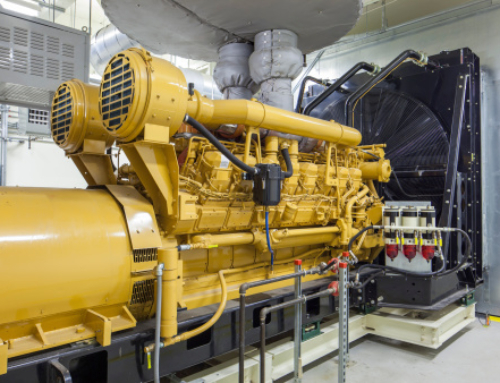In the U.S., about 23% of greenhouse gas emissions stem from the industrial sector. The large and powerful industrial equipment is a primary culprit for this.
The equipment, while pivotal for growth, is also a significant pollution contributor. As industries expand, so too does the pressing concern over these escalating emissions.
This is why understanding the carbon footprint of industrial equipment is important. Learn more about your industrial equipment’s carbon footprint and how to reduce it.
Table of Contents
What is Carbon Footprint?
A carbon footprint represents the amount of greenhouse gases released into the atmosphere. The carbon footprint isn’t about carbon dioxide (CO2) only. Greenhouse gases originate from specific sources and each has unique impacts.
Carbon Dioxide (CO2)
Carbon dioxide is a primary contributor to the carbon footprint. It stems from the combustion of fossil fuels such as:
- Coal
- Oil
- Natural gas
The use of diesel engines often contributes to CO2 emissions.
Methane (CH4)
Methane is a potent greenhouse gas with a much higher heat-trapping capability. It is often released when handling fossil fuels, especially during the:
- Extraction
- Processing
- Transportation
Nitrous Oxide (N2O)
Industries that rely on combustion processes are prime sources of N2O emissions. For instance, the combustion of fossil fuels at high temperatures in industrial furnaces.
Hydrofluorocarbons (HFCs)
HFCs are synthetic gases used as refrigerants and in air conditioning systems. While they don’t stay in the atmosphere for long, they have a higher heat-trapping than CO2.
Perfluorocarbons (PFCs)
PFCs are another group of synthetic greenhouse gases. They’re often used in semiconductor manufacturing processes.
Nitrogen Trifluoride (NF3)
NF3 is used in the production of electronic components and semiconductors. It has a high heat-trapping potential. Additionally, it can remain in the atmosphere for an extended period.
Sulfur Hexafluoride (SF6)
SF6 is often used as an insulating gas in electrical equipment. This is due to its non-flammable and stable properties. However, it is a potent greenhouse gas with a very high heat-trapping capability.
Why Does the Carbon Footprint of Industrial Equipment Matter?
Industrial equipment is the backbone of modern manufacturing and production processes. But unfortunately, they contribute to carbon emissions. Here is why carbon footprint matters:
Climate Change
Excessive greenhouse gas emissions contribute to global warming and climate change. This results in various adverse effects. They include:
- Rising temperatures
- Extreme weather events
- Rising sea levels
- Habitat disruption
Reducing the carbon footprint of industrial equipment is crucial for curbing these effects. It also contributes to the achievement of global climate goals.
Air Quality
Industrial activities contribute to air pollution. This can have adverse effects on human health. High levels of pollutants often lead to respiratory issues and other health complications.
When you reduce carbon emissions from industrial equipment, you can improve air quality. This can benefit the environment and public health.
Resource Depletion
Many industrial processes consume vast amounts of energy and resources. Reducing carbon emissions can lessen resource consumption.
It helps conserve valuable resources and lowers the environmental impact of extraction and processing.
Regulatory Compliance
Many governments worldwide are enacting stricter regulations to limit greenhouse gas emissions. Industries that fail to adhere to these regulations may face hefty fines. What’s more, your industry may ruin its reputation.
Monitoring and reducing carbon footprint ensures compliance with such regulations. As a result, you can avoid legal complications.
It also helps show commitment to environmental responsibility. This can help enhance your company’s reputation.
How Do Industries Calculate the Carbon Footprint of Their Equipment?
Calculating the carbon footprint of equipment is crucial for industries. It can help them understand and mitigate their environmental impact. Here’s a step-by-step process:
Step 1: Access the Calculator
Find a calculator that measures greenhouse gas emissions. For instance, you can use the ERA Equipment CO2 Calculator.
Step 2: Select Equipment Type
Choose the specific type of equipment you want to calculate the carbon footprint for. This can range from diesel-fueled machinery to electrical appliances.
Step 3: Enter Equipment Details
Input the necessary information about the selected equipment. This includes the:
- Make
- Model
- Operating capacity
You also need to specify the fuel type or energy source used by the equipment.
Also, provide details like working hours per day and days of operation per year. Don’t forget to add the equipment’s lifetime usage in years.
Step 4: Fuel Consumption and Efficiency
Enter the fuel consumption rate of the equipment in liters or gallons per hour. Besides the environmental impact, this can also help with measuring operational costs.
Step 5: Calculate Emissions
Click on the “Calculate” button. It will help you get the estimated carbon emissions produced by the equipment.
Ways to Reduce the Carbon Footprint of Industrial Equipment
Lessening the carbon footprint is a critical goal. You need to incorporate strategies to reduce the carbon footprint of your equipment.
Embrace Energy Efficiency
Enhance the energy efficiency of industrial equipment. When considering new equipment purchases, opt for models with higher energy efficiency ratings.
Such equipment often consumes less energy to achieve the same output. This can help lower CO2 emissions.
Transition to Renewable Energy Sources
Move from fossil fuels to renewable energy sources. You can achieve this by integrating solar panels to power equipment operations.
Opt for Used Equipment
Choosing used industrial equipment over brand-new options can help mitigate CO2 emissions. The production of new equipment requires significant resources and energy. This can lead to higher emissions.
Implement Regular Maintenance
Well-maintained industrial equipment operates more efficiently. This can help lower energy consumption and reduce emissions.
Regular servicing and maintenance ensure that equipment functions well. It reduces the need for excessive fuel consumption and prevents unnecessary emissions.
Monitor and Optimize Operations
This will help you track the performance of your industrial equipment in real time. This data-driven approach will help you identify inefficiencies and optimize equipment operations. It also helps reduce energy waste.
Slash Your Carbon Footprint With Sustainable Industrial Equipment
The impact of carbon emissions cannot be underestimated. Mitigating this issue can help protect the environment.
Are you ready to make a difference? At Swift Equipment, we understand the urgency of curbing carbon emissions.
Our energy-efficient equipment position us as your partner in reducing your carbon footprint. Contact us today to learn more.
Frequently Asked Questions about Carbon Footprint
Can improving the design of industrial equipment help reduce carbon footprints?
Yes, optimizing design for energy efficiency and durability can significantly lower carbon footprints.
Is it financially beneficial for industries to reduce the carbon footprint of their equipment?
Yes, reducing carbon footprints often leads to cost savings through lower energy consumption and improved efficiency, making it financially beneficial in the long run.
What factors contribute to the carbon footprint of industrial equipment?
Factors include energy consumption during production, transportation, energy use during operation, and end-of-life disposal.








Leave A Comment